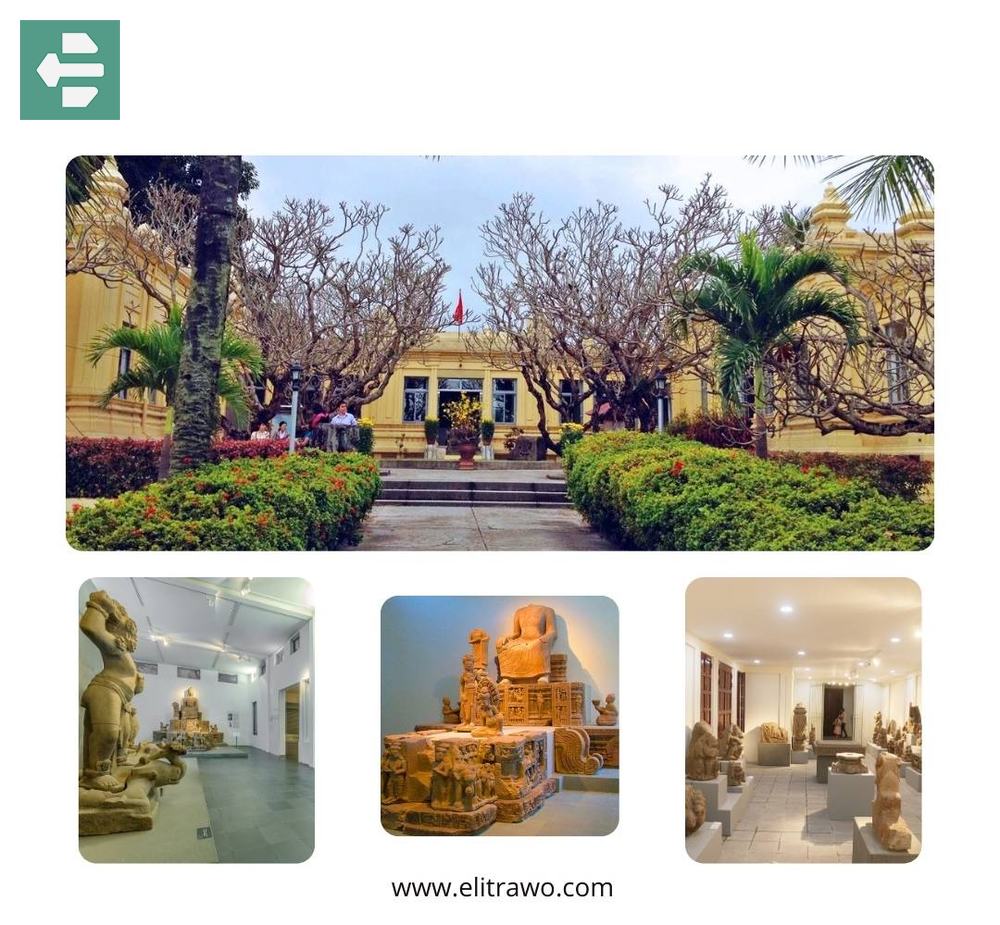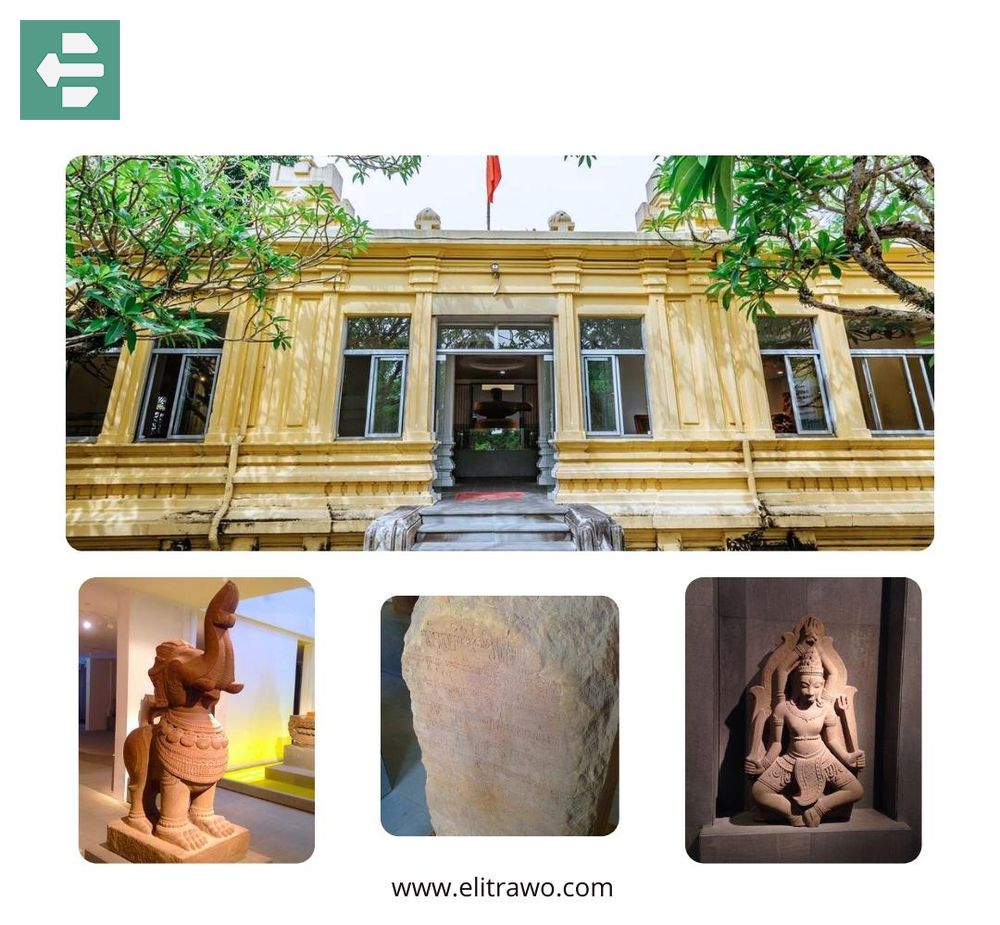Uncover the treasures of the Museum of Cham Sculpture Da Nang. This guide offers essential tips for independent travelers, including location, ticket prices, and must-see artifacts. Experience the rich history of the Champa Kingdom at this cultural gem in Vietnam. Visit Elitrawo for more insights!
List of Contents
- 1. Introduction to the Museum of Cham Sculpture Da Nang
- 2. Exploring the Danang Cham Museum
- 3. Vietnam Cham Museum Collections
- 4. Visitor's Guide to the Cham Sculpture Museum Da Nang
- 5. The Cham Museum Danang: A Cultural Journey
- 6. Planning Your Visit to the Cham Sculpture Museum
- 7. Tips for a Memorable Experience
1. Introduction to the Museum of Cham Sculpture Da Nang
The Museum of Cham Sculpture Da Nang stands as a testament to the rich cultural heritage of the ancient Champa Kingdom , offering visitors an unparalleled glimpse into Vietnam's storied past.
The Champa Kingdom, which thrived in central Vietnam from approximately 192 AD to 1697 AD, left behind a legacy that continues to captivate historians, archaeologists, and travelers alike. This museum is more than just a repository of artifacts; it serves as a narrative thread connecting modern-day visitors with the civilization that once flourished in this region.
For independent travelers eager to delve into Vietnam’s historical tapestry, the museum of cham sculpture da nang is an essential stop. Whether you refer to it as the danang cham museum, the cham sculpture museum da nang, or simply the cham museum vietnam, this institution is globally recognized for its extensive collection of Cham art and artifacts.

1.1. Overview of the Museum's Significance
Established in 1919, the Museum of Cham Sculpture Da Nang holds the distinction of being the largest collection of Cham artifacts in the world. With nearly 300 sculptures crafted from sandstone and terracotta, the museum showcases the remarkable artistry and spiritual depth of the Cham people. Each artifact not only reflects the artistic prowess of the Cham civilization but also provides insights into their spiritual beliefs and daily lives.
From intricate carvings depicting Hindu deities to scenes of everyday life, the vietnam cham museum offers a comprehensive look at the cultural and religious practices of this ancient kingdom. Visitors can explore these treasures while gaining a deeper appreciation for the cham museum in da nang ‘s role in preserving this unique heritage.
1.2. Location and Accessibility
Visit the Museum of Cham Sculpture Da Nang
- The museum's prime location makes it easy to reach from various parts of Da Nang.
- It is approximately 4 kilometers from Da Nang International Airport, facilitating easy access for newcomers.
- Located about 30 kilometers from Hoi An, it serves as a convenient stop for travelers exploring central Vietnam.
Convenient Location and Access
- Situated at No. 02, 2/9 Street, Hai Chau District, the museum is easily accessible and close to the scenic Han River.
- The museum welcomes visitors daily from 7:30 AM to 5 PM, allowing ample time for exploration.
- The entrance fee is a modest 60,000 VND (approximately $2.50), making it an affordable option for all travelers.
2. Exploring the Danang Cham Museum
Visiting the Danang Cham Museum is an immersive experience that combines stunning architecture with rich historical exhibitions. As one of the most iconic landmarks in Da Nang, the cham sculpture museum invites visitors to step back in time and connect with the ancient Champa culture.
2.1. Architectural Highlights
Designed by French architects Delaval and Auclair, the museum features a harmonious blend of French Gothic style and traditional Cham architecture.
Its pyramid-shaped roof pays homage to the architectural motifs of the Champa civilization, creating a visually striking exterior. Large windows allow natural light to illuminate the exhibition spaces, enhancing the overall ambiance and inviting visitors to engage deeply with the displays.
2.2. Exhibition Layout and Organization
The museum cham comprises ten exhibition rooms, each dedicated to different regions where artifacts were unearthed, such as the My Son and Tra Kieu galleries.
This thoughtful arrangement allows visitors to appreciate the geographical spread and cultural significance of each piece within its historical context. Whether you're exploring the cham museum in da nang or admiring the intricacies of individual sculptures, the layout ensures a seamless and educational journey through history.

3. Vietnam Cham Museum Collections
The collections housed within the Vietnam Cham Museum are not only extensive but also profoundly significant in understanding the Champa civilization. These artifacts provide invaluable insights into the artistic, spiritual, and cultural achievements of the Cham people.
Among the museum's treasures are three national treasures: the My Son E1 altar, the Tra Kieu altar, and the Tara Bodhisattva statue. These exquisite examples of Cham artistry feature intricate carvings that depict Hindu deities and scenes from daily life, showcasing the artistic excellence of the Cham artisans.
- The My Son E1 altar captures the harmonious relationship between spirituality and nature, with detailed carvings representing forest life among Hindu monks.
- The Tara Bodhisattva statue, standing at a remarkable 1.148 meters tall, is the largest bronze work in the museum. This masterpiece exemplifies the artistic sophistication of the Cham civilization and remains a highlight for many visitors.
Each artifact tells a story, allowing visitors to connect with the spiritual essence of the ancient Champa culture. From the cham museum vietnam ’s vast collection to its carefully curated exhibits, every corner of the museum invites reflection on the civilization’s beliefs and practices.

4. Visitor's Guide to the Cham Sculpture Museum Da Nang
Visiting the Cham Sculpture Museum Da Nang is an enriching experience that offers insight into the ancient Champa civilization. To make your visit smooth and enjoyable, here’s what you need to know.

4.1. Entrance Fees and Opening Hours
- The entrance fee for adults at the Museum of Cham Sculpture Da Nang Vietnam is 60,000 VND (approximately $2.50 ).
Students can enter for a reduced fee of 10,000 VND . - The museum operates daily from 7:30 AM to 5 PM , providing ample time to explore its extensive collections.
- Important: The Da Nang Cham Museum is closed on Mondays , so plan your visit accordingly.
4.2. Guided Tours and Audio Guides
- For a more enriching experience, consider taking advantage of the guided tours available at the Cham Museum Danang.
- Tours are offered in Vietnamese, English, and French.
- Group tours require a minimum of five participants.
- It is recommended to book your guided tour at least three days in advance if you need a guide who speaks English or French.
- The museum also provides a convenient audio guide service:
- Accessible via the museum's Wi-Fi.
- Visitors can log in and visit https://chamaudio.com to choose their preferred language and listen to detailed commentaries on various artifacts as they explore.
5. The Cham Museum Danang: A Cultural Journey
The Cham Museum Danang is not just a repository of artifacts; it is a portal into the rich history of the Champa civilization that once thrived in Vietnam.

5.1. Understanding the Champa Civilization
The Champa civilization flourished from approximately 192 AD until its decline in the late 15th century .
It is characterized by a unique blend of Hindu and Buddhist influences , which significantly shaped its art and architecture .
The Vietnam Cham Museum houses artifacts that reflect this vibrant culture , allowing visitors to grasp the significance of Champa’s contributions to Vietnam’s heritage .
5.2. Artistic Styles and Influences
Champa art is renowned for its intricate carvings and distinctive styles, often incorporating elements from Indian culture while retaining local characteristics.
The sculptures on display include depictions of Hindu deities like Shiva , as well as representations of daily life in ancient Champa society.
These works showcase a rich artistic tradition that evolved over centuries, providing insight into the cultural dynamics of the Champa people.
6. Planning Your Visit to the Cham Sculpture Museum
To make the most of your experience at the Museum of Cham Sculpture, consider these practical tips.

6.1. Best Times to Visit danang cham museum
The best times to visit the Cham Sculpture Museum Da Nang are early in the morning or late in the afternoon when crowds are thinner.
Visiting during these times allows for a more intimate experience with the artifacts, enhancing your connection to the historical context of each piece.
6.2. How to Get to the Museum of Cham Sculpture?
The museum is conveniently located at No. 02, 2/9 Street, Hai Chau District in Da Nang, making it easy to reach by various means of transportation:
- By Taxi: Approximately 4 kilometers from Da Nang International Airport.
- By Bus: Local buses run frequently from different parts of the city with fares ranging from 5,000 VND to 10,000 VND.
- By Scooter: Renting a scooter is a popular option among travelers; just follow signs towards Hai Chau District.
After visiting the museum, consider exploring nearby attractions such as Dragon Bridge or enjoying local cuisine at Da Nang Night Market.
Read more: How to Get Around in Da Nang

7. Tips for a Memorable Experience
To make the most of your visit to the museum of cham sculpture danang vietnam , here are some practical tips:
- Tickets: Keep your entrance ticket handy, as you’ll need it for entry.
- Respect Artifacts: Do not touch or climb on any displayed items.
- Luggage Policy: Large bags are not allowed; use the luggage counter if needed.
- Dress Code: Dress neatly and respectfully during your visit.
- Guided Tours: Consider renting an audio guide or hiring a tour guide for a richer, more informative experience.
- Wear Comfortable Shoes: The museum spans multiple galleries, and walking through the exhibits can take several hours.
- Bring Water: Staying hydrated is essential, especially if you're visiting during the hot summer months.
- Photography Rules: Photography is allowed in most areas, but flash photography may be restricted to preserve the delicate artifacts. Always check with museum staff before taking photos.
The Museum of Cham Sculpture Da Nang is a must-visit destination for anyone exploring Da Nang Vietnam. With its rich collection of artifacts and insightful exhibitions, it offers a unique opportunity to delve into the history and culture of the ancient Champa civilization.
Whether you're seeking things to do in Da Nang or looking to enrich your understanding of Vietnam's heritage, this museum promises a captivating experience that will leave a lasting impression.
For more travel tips and guides tailored for independent explorers like you, check out other articles on Elitrawo Blog!





